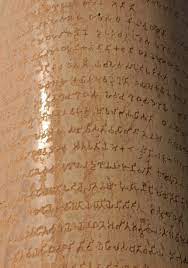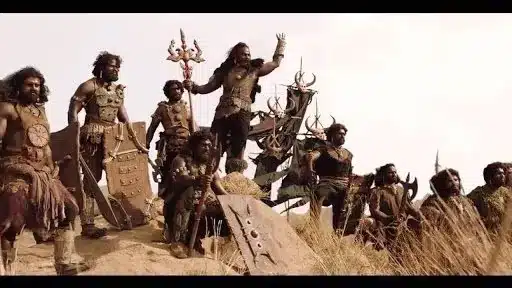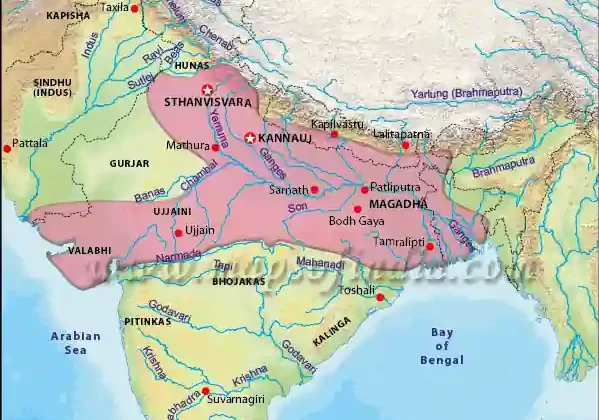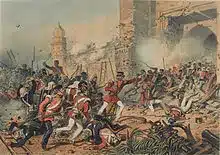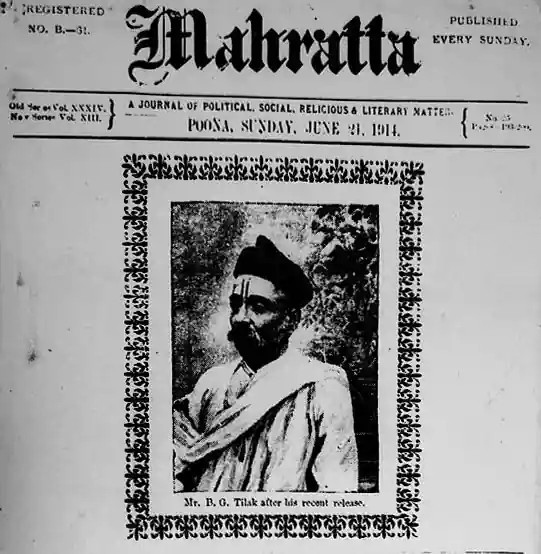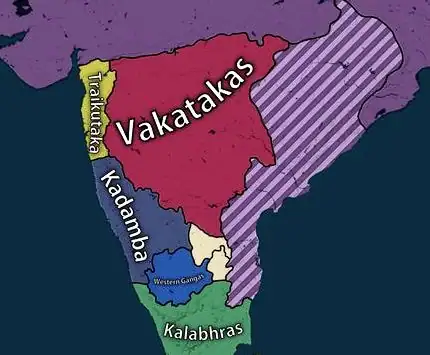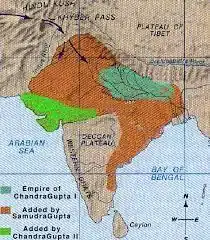Introduction of Vedic Period
Around 1900 BC Harappan cities began to decline. Harappan culture was followed by another great civilisation and culture known as Vedic culture. It is called Vedic Age as its reconstruction is primarily based on using Vedic texts as sources. Indo-Aryans are believed to be the composers of Vedic texts. The term ‘Indo-Aryans’ is basically a linguistic term and refers to speakers of a sub group of the Indo-Iranian branch of the Indo-European family of languages.
- The Vedic civilization is named after the Vedas, especially the Rig Veda, which is the earliest specimen of the Indo-European language and the chief source of information on the history of this period.
- The Vedic Civilization flourished along the river Saraswati, in a region that now consists of the modern Indian states of Haryana and Punjab.
- Later, they moved into Indo-Gangetic plains.
- They were mainly a cattle-keeping people, and were mainly in search of pastures.
- By 6th century B.C., they occupied the whole of North India, which was referred to as Aryavarta.
- This period between 1500 B.C and 600 B.C is divided into the Early Vedic Period or Rig Vedic Period (1500 B.C -1000 B.C) and the Later Vedic Period (1000B.C – 600 B.C).
- Many historians have given various theories regarding the original place of the Aryans, however, largely accepted view is the Central Asian Theory given by Max Muller.
- It states that the Aryans were semi-nomadic pastoral people around the Caspian Sea in Central Asia.
- The holy book of Iran ‘Zend Avesta’ indicates entry of Aryans to India via Iran.
- A section of Aryans reached the frontiers of the Indian subcontinent around 1500 BC and first settled in Punjab and it is here, in this land, where the hymns of Rigveda were composed.
- The Aryans lived in tribes and spoke Sanskrit, which belonged to the Indo-European group of languages.
Origin of the Aryans
There is still no consensus on the original home of Aryans and different theories are postulated which further continue the debate. The different theories are as follows:
| Theory | Supported by |
| European Theory | Sir William Jones (1786) |
| Central Asian Theory | Max Muller |
| Artic Region Theory | Bal Gangadhar Tilak |
| Tibet Theory | Swami Dayanand Saraswati |
- In the 19th century, Aryans were considered a race.
- Now it is thought of as a linguistic group of people who spoke Indo-European language from which later emerged Sanskrit, Latin, and Greek etc.
- This is reflected from the words in these languages which are similar in sound and meaning.
- Thus the Sanskrit words matri and pitri are similar to the Latin mater and pater. Similarly, Inar of the Hittite (Turkey) language is similar to Indra of the Vedas. Suryyas and Maruttash of the Kassite (Mesopotamia) inscriptions are equivalent of the Vedic Surya and Marut.
- Originally the Aryans seem to have lived somewhere in the Steppes stretching from southern Russia to Central Asia. From here, a group of them migrated to northwest India and came to be called Indo-Aryans or just Aryans.
- The archaeological evidence of migrations comes from what is known as Andronovo Culture situated in southern Siberia. This Culture flourished in the second millennium BC. From here people moved to north of Hindukush (the area known as Bactria-Margiana Archaeological Complex) and from here they entered India.
- During the period between 1900 BC and 1500 BC we get, in these regions, evidence of horses, spoked wheels, fire cult and cremation which formed important parts of Aryan life in India.
- Apart from these, the artifacts and ceramics also suggest movement of people from Central Asian region to South Asian region. However it may be noted that some scholars still argue that the Aryans were the indigenous people of India and that they did not come from outside. The new people came in several batches spanning several hundred years. All this while interaction between the indigenous inhabitants and the newcomers continued. One of the important results of this process of interaction was that the Vedic form of the Aryan language became predominant in the entire Northwestern India. The texts composed in this language, as mentioned above, are popularly known as the Vedic Texts.
Vedic Texts
The glory of Aryans is in their literature. The Vedic texts were composed in Sanskrit and orally transmitted for many centuries before they were finally written down. During this transition from oral to written versions, the language also evolved from what was known as Vedic Sanskrit to Classical Sanskrit.
Shruti and Smriti
- The Vedic literature is broadly divided into two categories viz. Shruti and Smriti.
- Shruti (that was heard) literature was initially transmitted orally before it was finally written down. It is considered authoritative, canonical, eternal / divine and unquestionable truth. Vedas, Brahmanas, Aranyakas and Upanishads together form the Shruti literature and make the central canon of Hinduism. These also make the four components of Vedic literature.
- Smriti is what is remembered, supplementary and may change over time. The entire body of Classical Sanskrit literature is Smriti including Vedangas, Shatdarshana, Puranas, Itihasas (epics), Upavedas, Trantras, Agamas and Upangas. They are authoritative to the extent that they conform to the bedrock of Shruti.
- However, there is not a distinct divide between Shruti and Smriti. Both can be represented as a continuum.
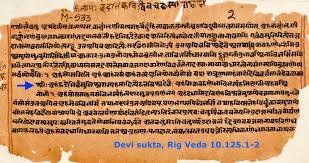
- The word ‘Veda’ is derived from the root ‘vid’, which means ‘to know’. In other words, the term ‘Veda’ signifies wisdom, knowledge or vision.
- There are four Vedas and Rig Veda was composed in the early Vedic period while the other three Vedas were written in the later Vedic period.
- The Rig Veda: It is the earliest of the four Vedas and it consists of ten mandalas or books and 1028 hymns. The hymns were sung in praise of Agni, Indra, Mitra, Varuna and other Gods.
- The Sama Veda: It is a collection of melodies. It contains stanzas taken from the Rig Veda and set to the tune for the purpose of singing. Samaveda is important in tracing the history of Indian music.
- The Yajur Veda: It consists of not only hymns, but also rituals that have to accompany their recitation. Various details of rules to be observed at the time of sacrifice are mentioned in this Veda. The rituals reflect the social and political milieu in which they arose. There are two main texts of the Yajurveda: Shukla Yajurveda or Vajasaneyi (Madhyandina and Kanva) and Krishna-Yajurveda (Taittiriya, Kathaka, Maitrayani and Kapisthal).
- The Atharva Veda: It contains details of rituals. It also contains charms and spells to ward off evils and diseases. The content of this Veda also throws light on the beliefs and practices of the non-Aryans.
- The Brahmanas explain the hymns of the Vedas. They act as the appendices to the Vedas. They are written in prose and they elaborately describe the various sacrifices and rituals, along with their mystical meanings. Each Veda has several Brahmanas.
- The two Brahmanas attached to the Rig-Veda are Aitareya Brahmana and Kaushitaki Brahmana.
- The Aranyakas are called forest books and they deal with mysticism, rites, rituals and sacrifices. They deal with mysticism and symbolism. They form the natural transition to the Upanishads. They offer the bridge between Karma marga (way of deeds) which was the sole concern of the Brahmanas and the Jnana marga (way of knowledge) which the Upanishads advocated.
- The Upanishads are philosophical texts dealing with topics like the soul, the absolute, the origin of the world and the mysteries of nature. It criticizes the rituals and lay stress on the value of right belief and knowledge. The language of the Upanishads was classical Sanskrit and not the Vedic Sanskrit. It states that goal of the life is to attain salvation which is possible through self control. There are 108 Upanishads. Out of 108 Upanishads, 13 are considered the major ones. The concepts of ‘Atman’ and ‘Brahman’ are majorly explained by Upanishads.
- Important Upanishads
- Aitareya Upanishad: Talks about the creation of Atman (Soul) and Consciousness.
- Chandogya Upanishad: Deals with rhythm and chanting of Mantras.
- Katha Upanishad: Tells the story of Nachiketa and Yama. Their conversation evolves into discussion of Man, Atman (soul), Knowledge, and Moksha (liberation).
- Brihadaranyaka Upanishad: Talks about the transmigration of Atman; passages on metaphysics and ethics.
- Mundaka Upanishad: Contains the mantra “Satyameva Jayate” (truth alone triumphs) which is borrowed in the National Emblem of India.
GEOGRAPHICAL HORIZON OF THE VEDIC ARYANS
The early Vedic Aryans lived in the area known as sapta-sindhu meaning area of seven rivers. This area largely covers the northwestern part of South Asia up to river Yamuna. The seven rivers included Sindhu, Vitasta (Jhelum), Asikni (Chenab), Parushni (Ravi), Vipash (Beas), Shutudri (Sutlej) and the Sarasvati. In this area the Rigvedic people lived, fought battles, grazed their herds of cattle and other domesticated animals. Gradually moving eastward, they came to occupy eastern U.P. (Kosala) and north Bihar (Videha) during the Later Vedic period. Here they came into contact with the people who spoke languages different from their own and were living in this area for long.
- The geographical area covered by the early Aryans is indicated from certain allusions in the Rigveda, which seems to have been limited to an area extending from Afghanistan to the Gangetic valley.
- The former region was occupied by the Aryans is from the mention of rivers like the Kubha (Kabul), the Suvastu, situated north of Kabul.
- A total of 31 rivers have been mentioned in Rig-Vedic hymns.
- The Sindhu , identical with the Indus, is the river par excellence of the Rigvedic Aryans and is repeatedly mentioned, so also are its five tributaries – the Vitasta (Jhelum), Asikni (Chenab), Parushni (Ravi), Vipasa (Beas) and the Sutudri (Sutlej).
- Similarly, Dirsadvati (Chantang) is named, but the Sarasvati, now lost in the sands of Rajasthan, was first of the Rigvedic river as its banks witnessed the development of Vedic rituals and cult of sacrifices.
- The Yamuna is twice mentioned and the Ganga only once.
- Among mountains, they have mentioned Himalayas, Arjika, Mujavant, Silament (Suleman range) etc.
- They knew nothing about the Vindhyas and were not familiar with the sea.
- The Shatapatha brahamana mentioned eastern and western oceans.
- The reference of seas in the early rig Vedic text is doubtful. However, in the later-Vedic literature, Samudram actually means the sea. There are references to eastern and western oceans in the Satapatha Brahmana, which indicate acquaintance with the Bay of Bengal and the Arabian Sea in the later Vedic era.
- The Rig Vedic Aryans were not familiar with any kind of desert. However, an implied reference to Maru as the country of desert mounds near Kurukshetra has been traced in Taittiriya Aryanka.
- Vedic culture was essentially a rural culture, and cities had not emerged; no important place name is hence recorded. In the Rig-Veda it was because of the migratory nature of the tribes and in the later-Vedic period of the regions comes to be known by the names of the tribes who controlled them.
| Rig-Vedic Name | Modern Name |
| Sindhu | Indus |
| Vitase | Jhelum |
| Askini | Chenab |
| Purushni | Ravi |
| Vipas | Beas |
| Sutudri | Satluj |
| Gumal | Gomati |
| Krumu | Kurram |
| Drishdavati | Ghagghar |
| Suwastu | Swat |
Economy of the Vedic Period
EARLY VEDIC ECONOMY
- The Aryans came to India as semi-nomadic people with a mixed pastoral and agricultural economy, in which cattle-rearing played an important role.
- Cattle formed their most valued possessions and chief form of their wealth.
- The cow was in fact a sort of currency and values were reckoned in heads of cattle. Importance of the cow can-be measured from the fact that many early linguistic expressions were associated with cattle.
- Word for battle came to be known as ‘gavishth’ , literally, a search for cows.
- Those who lived in the same cowshed came to belong to the same ‘gotra’, which later indicated a common ancestor.
- The daughter was known as ‘duhitri’, milker of the cow.
- Gavyuti was used as a measure of distance and Godhuli as a measure of time.
- The cow is described in one or two places in Rigveda as `aghnya’, not to be killed; but this may imply only its economic importance.
- It was not yet held sacred. This indicates that cow was the most important form of wealth.
- Whenever gifts were made to priests, it was in terms of cows and never in terms of measurement of land.
- Of the other animals reared by the Aryans, the horse was the most important of them. The horse was essential for movement, to speed in war and it drew the chariots.
- Among other domestic animals, the early Aryans knew the goat and sheep which provided wool, their chief textile.
- Of the wild animal, lion was known earlier than tiger. The elephant was look upon with curiosity.
- Since domesticated animals seem to have been tended by common herdsmen, it has been suggested that they were under the common ownership of the members of the tribe.
- The evidence for agriculture in comparison with pastoral activities in the early portions is meager and mostly late insertions. A few references show that they had knowledge of agriculture and practiced it to supplement their food requirements. They produced yava (modern jau or barley), which was rather a generic word for cereals.
- With the knowledge and use of iron they were able to clean forests and bring more lands under cultivation.
- Apart from cattle-rearing and small-scale cultivation, people were engaged in many other economic activities. Hunting, carpentry, tanning, weaving, chariot-making, metal smeltry etc. were some such activities.
- Carpentry was an important profession and the availability of wood from the forests cleared made the profession profitable. Carpenters produced chariots and ploughs.
- Workers in metal made a variety of articles with copper, bronze and iron.
- Their bronze smiths were highly skilled, and produced tools and weapons much superior to those of Harappan culture.
- Spinning was another important occupation and cotton and woolen fabrics were made. Goldsmiths were active in making ornaments.
- The potters made various kinds of vessels for domestic use.
- Trade was another important economic activity and rivers served as important means of transport.
- The principal media of trade was barter.
- Cow was used as unit of value.
- Gradually pieces of gold called “Nishka” were used as means of exchange.
- In the later times, gold coins called nishka, Krishnal and Satmana were used as media of exchange in large transactions.
- Trade and commerce was regulated and managed by a group of people called “Pani”.
- Possibly they lived in some kind of fortified mud settlements. At a site in Haryana (Bhagwanpura), a thirteen-room mud house has been discovered, which might have been a house for a large extended family or for a tribal chief.
CHANGES IN THE LATER VEDIC PHASE
- During later Vedic phase, agriculture became the mainstay of the Vedic people. Many rituals were introduced to initiate the process of agriculture. It also speaks of ploughing with yokes of six and eight oxen. The buffalo had been domesticated for the agricultural purposes. This animal was extremely useful in ploughing the swampy land.
- The god Indra acquires a new epithet ‘Lord of the Plough’ in this period. The number and varieties of plant food increased. Apart from barley, people now cultivated wheat, rice, pulses, lentils, millet, sugarcane etc.
- The items of dana and dakshina included cooked rice. Thus with the beginning of food production agricultural produce began to be offered in the rituals. Tila, from which the first widely used vegetable food-oil was derived increasingly, came to be used in rituals.
- The main factor in the expansion of the Aryan culture during the later Vedic period was the beginning of the use of iron around 1000 BC. The Rigvedic people knew of a metal called ayas which was either copper or bronze. In the later Vedic literature ayas was qualified with shyama or krishna meaning black to denote iron. Archaeology has shown that iron began to be used around 1000 BC which is also the period of later Vedic literature.
- The Gold piece of specific weight Satamana was used as a currency rate. Use of Gold as currency is mentioned in Satapatha Brahman. Nishka was another popular currency. The other matellic coins were Suvarna and Krishnala. Barter system still existed. Money lending as a trade was prevalent. Money lenders were called Kusidin.
- The northern and eastern parts of India to which the Aryans later migrated receive more rainfall than the north-western part of India. As a result this region is covered with thick rain forests which could not be cleared by copper or stone tools used by Rigvedic people. The use of iron tools now helped people clear the dense rain forests particularly the huge stumps left after burning, in a more effective manner. Large tracts of forestland could be converted into cultivable pieces in relatively lesser time. The iron plough could turn the soil from deeper portions making it more fertile. This process seems to have begun during the later part of the Rigvedic period but the effect of iron tools and implements become evident only towards the end of the Later Vedic period.
- There has been a continuous increase in the population during the later Vedic period due to the expansion of the economy based on agriculture. The increasing number and size of Painted Grey Ware (PGW) settlements in the doab area shows this. With the passage of time the Vedic people also acquired better knowledge of seasons, manuring and irrigation.
- All these developments resulted in the substantial enlargement of certain settlements such as Hastinapur and Kaushambi towards the end of the Later Vedic period. These settlements slowly began to acquire characteristics of towns. Such rudimentary towns inhabited mainly by the chiefs, princes, priests and artisans were supported by the peasants who could spare for them some part of their produce voluntarily or involuntarily.
Society of the Vedic Period
THE EARLY VEDIC SOCIETY
- The family was the basic unit of the Rigvedic society. The head of the family was known as grahapathi.
- It was patriarchal in nature. Monogamy was the usual norm of marriage but the chiefs at times practiced polygamy. Marriages took place after attaining maturity.
- The family was part of a larger grouping called vis or clan. One or more than one clans made jana or tribe. The jana was the largest social unit. All the members of a clan were related to each other by blood relation. The membership of a tribe was based on birth and not on residence in a certain area. Thus the members of the Bharata tribe were known as the Bharatas. It did not imply any territory.
- The Rigvedic society was a simple and largely an egalitarian society. There was no caste division. Occupation was not based on birth. Members of a family could adopt different occupations. However certain differences did exist during the period. Varna or colour was the basis of initial differentiation between the Vedic and non-Vedic people. The Vedic people were fair whereas the non-Vedic indigenous people were dark in complexion and spoke a different language. Thus the Rigveda mentions arya varna and dasa varna. Here dasa has been used in the sense of a group different from the Rigvedic people. Later, dasa came to mean a slave.
- Besides, certain practices during this period, such as concentration of larger share of the war booty in the hands of the chiefs and priests resulted in the creation of some inequalities within a tribe during the later part of this Vedic phase.
- The warriors, priests and the ordinary people were the three sections of the Rigvedic tribe. The sudra category came into existence only towards the end of the Rigvedic period. This means that the division of society in the early Vedic period was not sharp.
- This is indicated by the following verse in the Rigveda: “I am a poet, my father is a physician and my mother grinds grain upon the stone. Striving for wealth, with varied plans, we follow our desires like cattle.”
- The women in society enjoyed respectable position. She was married at a proper age and could choose a husband of her own choice. She could take part in the proceedings of the tribal assemblies called sabha and samiti.
SOCIAL CHANGES IN THE LATER VEDIC PHASE
- The family remains the basic unit of the Vedic society. However, its composition underwent a change. The later Vedic family became large enough to be called a joint-family with three or four generations living together. The rows of hearths discovered at Atranjikhera and at Ahichchhtra (both in western Uttar Pradesh) show that these were meant for communal feeding or for cooking the food of large families.
- The institution of gotra developed in this period. This means that people having common gotra descended from a common ancestor and no marriage between the members of the same gotra could take place.
- Monogamous marriages were preferred even though polygamy was frequent.
- Some restrictions on women appeared during this period. In a text women have been counted as a vice along with dice and wine. In another text a daughter has been said to be the source of all sorrows. Women had to stay with her husband at his place after marriage. The participation of women in public meetings was restricted.
- However, the most important change was the rise and growth of social differentiation in the form of varna system. The four varnas in which society came to be divided were the brahmanas, kshatriyas, vaishyas and shudras. The growing number of sacrifices and rituals during the period made the brahmanas very powerful. They conducted various rituals including those related to different stages of agricultural operations. This made them all the more important. The kshatriyas, next in the social hierarchy, were the rulers. They along with brahmanas controlled all aspects of life. The vaishyas, the most numerous varna were engaged in agriculture as well as in trade and artisanal activities. The brahmanas and the kshatriyas were dependent on the tributes (gifts and taxes) paid to them by the vaishyas. The shudras, the fourth varna were at the bottom of the social hierarchy. They were ordained to be in the service of the three upper varnas. They were not entitled to the ritual of upanayana samskara (investiture with sacred thread necessary to acquire education). The other three varnas were entitled to such a ceremony and hence they were known as dvijas. This can be construed as the beginning of the imposition of disabilities on the shudras as well as the beginning of the concept of ritual pollution.
- Another important institution that began to take shape was ashrama or different stages of life. Brahmacharya (student life), grihastha (householder), and vanaprastha (hermitage) stages are mentioned in the texts. Later, sanyasa, the fourth stage also came to be added. Together with varna, it came to be known as varna-ashrama dharma.
Religion of the Vedic Period
THE EARLY VEDIC RELIGION
- They worshipped various manifestations of nature such as the sun, the moon, the sky, the Dawn, the thunder, the wind and the Air.
- Vedic hymns were composed in praise of nature.
- Rigveda mentions that thirty three gods and goddesses were worshipped by the Aryans.
- The prayers to propitiate gods for physical protection and for material gains were the main concerns of the Rigvedic people.
- The early gods of the Aryans, like those of the Greeks, were atmospheric gods and predominantly male.
- The attributes of these gods also reflect the tribal and patriarchal nature of the society as we do not find many goddesses mentioned in the text. Indra, Agni, Varuna, Mitra, Dyaus, Pushana, Yama, Soma, etc. are all male gods. In comparison, we have only a few goddesses such as Ushas, Sarasvati, Prithvi, etc which occupy secondary positions in the pantheon.
- Ushas was the goddess of appearance of dawn and Aditi was the mother of all the gods.
- Demi-gods were Gandharvas, Maruts and Vishvedevas.
- The number of hymns attributed to different Vedic gods are, Indra: 250; Agni: 200; Soma: 120; Varuna: 12; Surya: 10; Pushan: 08; Vishnu: 06; Rudra: 03; Mitra: 01.
- The functions of different gods reflect their needs in the society. Thus, since the Rigvedic people were engaged in wars with each other they worshipped Indra as a god. He is the most frequently mentioned god in the Rigveda. He carried the thunderbolt and was also respected as a weather god who brought rains.
- Maruts the god of storm aided Indra in the wars in the way tribesmen aided their leader in the tribal wars.
- Agni, the fire god was the god of the home and was considered an intermediary between gods and men.
- Soma was associated with plants and herbs. Soma was also a plant from which an intoxicating juice was extracted. This juice was drunk at sacrifices.
- Varuna, another important deity, was the keeper of the cosmic order known as rita. This rita was an important aspect of tribal set-up.
- Pushan was the god of the roads, herdsmen and cattle. In the life of the pastoral nomads, this god must have been very important. Other gods were similarly associated with other aspects of nature and life.
- All these gods were invoked and propitiated at yajnas or sacrifices. These sacrifices were organized by the chiefs of the tribes and performed by priests. Gods thus invoked in the sacrifices supposedly rewarded the sacrificers with success in wars, progeny, increase in cattle and long life. It also brought large number of gifts in the form of dana and dakshina to the priests.
- It is important here to note that during the entire Vedic phase people did not construct temples nor did they worship any statue. These features of Indian religion developed much later.
CHANGES IN THE LATER VEDIC PHASE
- We have already noted that in the later Vedic period agriculture had become an important activity of the people. Changes in the material life naturally resulted in a change in their attitude towards gods and goddesses too. Continuous interactions with the local non-Aryan population also contributed to these changes. Thus, Vishnu and Rudra which were smaller deities in the Rigveda became extremely important. However, we do not have any reference to different incarnations or avataras of Vishnu, we are so familiar with, in any of the Later Vedic texts.
- Another important feature was the increase in the frequency and number of the yajna which generally ended with the sacrifices of a large number of animals. This was probably the result of the growing importance of a class of brahmanas and their efforts to maintain their supremacy in the changing society. These yajnas brought to them a large amount of wealth in form of dana and dakshina. Some of the important yajnas were – ashvamedha, vajapeya, rajasuya etc. In these yajnas which continued for many days a large part of gifts went to the brahmanas.
- The purpose of these yajnas was twofold. Firstly, it established the authority of the chiefs over the people, and secondly, it reinforced the territorial aspect of the polity since people from all over the kingdom were invited to these sacrifices.
- People began to oppose these sacrifices during the later Vedic period itself. A large number of cattle and other animals which were sacrificed at the end of each yajna must have hampered the growth of economy.
- Therefore, a path of good conduct and self-sacrifice was recommended for happiness and welfare in the last sections of the Vedas, called the Upnishads. The Upnishads contain two basic principles of Indian philosophy viz., karma and the transmigration of soul, i.e., rebirth based on past deeds. According to these texts real happiness lies in getting moksha i.e. freedom from this cycle of birth and re-birth.
The polity of the Vedic Period
THE EARLY VEDIC POLITY
- The basic unit of political organization was kula or family and Kulapa was the head of the family.
- The grama, vis and jana were political units of the early Vedic Aryans.
- Several families joined together on the basis of their kinship to form a village or grama.
- Villages were headed by Gramini who used to represent village in Sabha and Samiti.
- A group of villages constituted a larger unit called Visu. It was headed by Vishayapati.
- The highest political unit was called jana or tribe.
- The head of the kingdom was called as Rajan or king. He was the leader in battle and protector of tribe.
- The Rig Vedic polity was normally monarchical and the succession was hereditary.
- However, the Rajan was a kind of chief, and he did not exercise unlimited power, for he had to reckon administration with the tribal councils like Sabha, Samiti, Gana and Vidhata.
- Vidhata appears for 122 times in the Rig-Veda and seems to be the most important assembly in the Rig Vedic period. Vidhata was an assembly meant for secular, religious and military purpose.
- Vidhata was the earliest folk assembly of the Aryans, performing all kinds of functions- economic, military religious and social. The Vidhata also provided common ground to clans and tribes for the worship of their gods.
- The term Sabha denotes both the assembly (in early Rig-Vedic) and the assembly hall (later Rig- Vedic). Women called Sabhavati also attended this assembly. It discussed pastoral affairs and performed judicial and administrative functions and exercised judicial authority.
- Samiti was a folk assembly in which people of the tribe gathered for transacting tribal business. It discussed philosophical issues and was concerned with religious ceremonies and prayers. References suggest that the Rajan was elected and re-elected by the Samiti.
- Women were also allowed to participate in the deliberations of the Sabha and Vidhata.
- The king was assisted by a number of officers of which Purohita was the most important.
- In day to day administration the king was assisted by the two types of Purohita i.e. Vasishtha and Vishwamitra.
- The Rigveda did not mention any officer for administering justice.
- Spies were employed to keep an eye on unsocial activities such as theft and burglary.
- The titles of the officials do not indicate their administration of territory. However, some officers seem to have been attached to territories. They enjoyed authority in the pasture grounds and settled villages.
- The officer of pasture ground was called ‘prajapati”, who led the heads of the families called ‘kulapas’ or the heads of the fighting horses called ‘gramanis’ to battle.
- In the beginning, the gramani was just the head of a small tribal fighting unit. But when the unit settled, the gramani became the head of the village and in course of time he became identical with Prajapati.
- The king did not maintain any regular army but in times of war he mustered a militia whose military functions were performed by different tribal groups called vratas, grama, gaha, sradha, etc.
- By and large, the military system was strong. The military technique of the early Aryans was much advanced. The Aryans succeeded everywhere because they possessed chariots driven by horses.
- There was no regular revenue system and the kingdom was maintained by the voluntary tribute (Bali) of his subjects and the booty won in battle.
- The sena or army was not a permanent fighting group and consisted of able bodied tribesmen who were mobilized at the time of the wars. Takshan, the carpenter and rathakara, the chariot maker were responsible for making chariots. There is no official mentioned as a collector of taxes. The people offered to the chief what is called bali. It was just a voluntary contribution made by the ordinary tribesmen on special occasions. All this shows that the early Vedic polity was an uncomplicated system based on the support and active participation of all the tribesmen. This situation, however, changed during the later Vedic phase.
CHANGES IN THE LATER VEDIC PHASE
- The changes in the material and social life during the later Vedic period led to changes in the political sphere as well. The nature of chiefship changed in this period.
- The territorial idea gained ground.
- The people started to loose their control over the chief and the popular assemblies gradually disappeared.
- The chiefship had become hereditary. The idea of the divine nature of kingship gets a mention in the literature of this period. The Brahmanas helped the chiefs in this process. The elaborate coronation rituals such as vajapeya and rajasuya established the chief authority. As the chiefs became more powerful, the authority of the popular assemblies started waning. The officers were appointed to help the chief in administration and they acquired the functions of the popular assemblies as main advisors. A rudimentary army too emerged as an important element of the political structure uring this period. All these lived on the taxes called bali, the shulka, and the bhaga offered by the people.
- The chiefs of this period belonged to the Kshatriya varna and they in league with the Brahmanas tried to establish complete control over the people in the name of dharma.
- However, all these elements do not show that a janapada or territorial state with all its attributes such as a standing army and bureaucracy had emerged in the later Vedic period but the process has started and soon after the Vedic period in the sixth century BC we notice the rise of sixteen mahajanpadas in northern India.
Types of Sacrifices & Rituals in Vedic Era
- Rajsuya: This sacrifice conferred supreme power to King.
- Asvamedha: Authorized the King an unquestioned control over an area.
- Vajapeya: It was a chariot race in which the Royal Chariot was to win the race against the kinsmen. This elevated the Raja to a Samrat.
- Garbhdharana: The conception ceremony.
- Pumsayam: Ritual to procure a male child.
- Sementonayam: Ritual to ensure the safety of the child in womb.
- Jatakarma: Birth ceremony performed prior to cutting the umbilical chord of the newborn infant
- Culakarma: performed in the 3rd year of the baby’s life.
- Upnayana: performed in the eighth year to confer dvija status.
Some Notable Trivia
- Kathopnishad deals with the dialogue between Nachiketa and Yama.
- “Satyamev Jayate” India’s motto comes from “Mundaka Upanishad”.
- Aitareya Brahman establishes the Superiority of Brahmins.
- Shudra word comes in the 10th Mandala of Rig-Veda, so this term also belongs to the later Vedic age.
- In the later Vedic period, divine royal theory started. The king in the center was called Raja, Samrat in the East, Swarat in the West, Virat in the North and Bhoj in the South.
- Coins were used in the Later Vedic Age.
- The most mentioned River is Indus, Most revered river is Saraswati.
- The marriage of a widow to a brother or relative of the deceased was known as “Niyoga”.
- Rishi Agastya is known for the Aryanization of South India.
- Jabala Upanishad mentions the 4 Ashrams for the first time.
- The swastika is said to be not only pre-Vedic but also Pre-Harappan and it existed in Baluchistan, Indus Valley and even Turkmenistan. It is NOT an exclusive Aryan Symbol.
- Vaishya as a Varna has NO mention in Rig-Veda.
- Yavyavati is another name for Ravi in Rig-Veda.
- Agni was a God which was worshipped by Aryans as well as Ancient Iranians.
- A hymn in Rig Veda is devoted to Lopamudra. She was the wife of Rishi Agastya and credited with spreading the fame of the Lalita sahastranama. Her other names are Kaushitaki and Varaprada.
- Gargi was the daughter of Rishi Vachaknu and is mentioned in the Sixth and the Eighth Brahmana of Brhadaranyaka Upanishad.
- Atranjikheda is the place where the largest deposits of Iron weapons have been found.
- The literal meaning of Aryamnah Pantha word is “Aryaman’s Way” and is an expression that occurs in the Brahmanas and denotes the “Milky way”.
- In the early Vedic era, there was no distinct theory of Kingship, and King (Rajan) was generally a tribal chieftain. This chieftain was the holder of the established order and moral rule which was called Dhratavatra.
| Origin of the Universe | Rig Veda |
| Mention of the eastern and western seas | Satpatha Brahmana |
| Mention of the ‘Great Flood’ | Satpatha Brahamana |
| ’Satyamev Jayate’ | Mandukya Upanishad |
| Samsara (transmigration of soul) | Brahadarankya Upanishad |
| Kshatriyas’ precedence over Brahmanas | Atreya Brahamana |
| The doctrine of ‘Trimurti’ | Maitrayani Upanishad |
| Sabha and Samiti as the twin daughters of Prajapati | Atharva Veda |
| Gotra | Atharva Veda |
| Purusashukta Hymn (Four-fold division of society) | Rig Veda (Tenth Mandala) |
| First three ashramas (Brahmacharya, Garhasthya, Vanaprastha) | Chhandogya Upanishad |
| Four ashrams (Brahmacharya, Garhasthya, Vanaprastha, Sannyas) | Jabala Upanishad |
Important Terms in Vedic Era
- Aghanya – Not to be killed
- Agnyadheya – ceremony which preceded the public rituals in Vedic Era.
- Akshavapa- accounts officer
- Amaju – Lifelong unmarried girl
- Bhagadugh – carpenter
- Bhishaka – Doctor or Vaidya
- Charmana – Blacksmith
- Datra – Sickle
- Duhitri – Milker of cow and also a daughter
- Gaura – Buffalo
- Gavishti – a fight for cows.
- Gocarman – a measure of distance
- Gotra – A kinship unit
- Hiranyakara – Goldsmith
- Kulala – Potter
- Purapati – responsible for defense.
- Rathakara – Chariot maker
- Samgavan – A measure of time
- Sarabha – Elephant
- Satdaya – Compensation for manslaughter
- Sira – Plough
- Sita – Furrows
- Takshan / Teshtri – carpenter
- Varatra -leather strap of the Plough
- Vrihi – Rice
Also refer :
- Download the pdf of Important MCQs From the History Of Ancient India
- List Of Important Inscriptions In India

